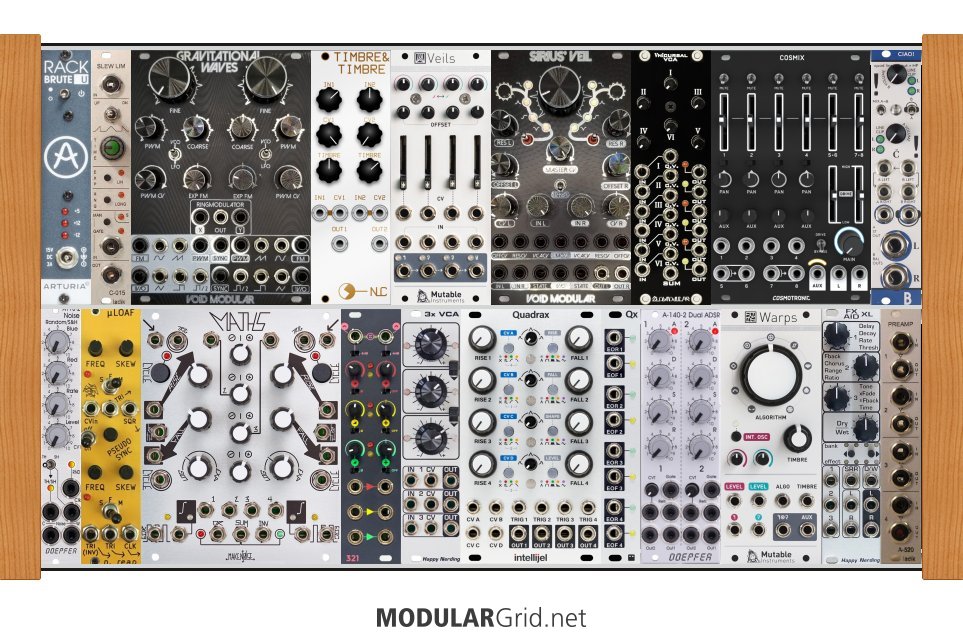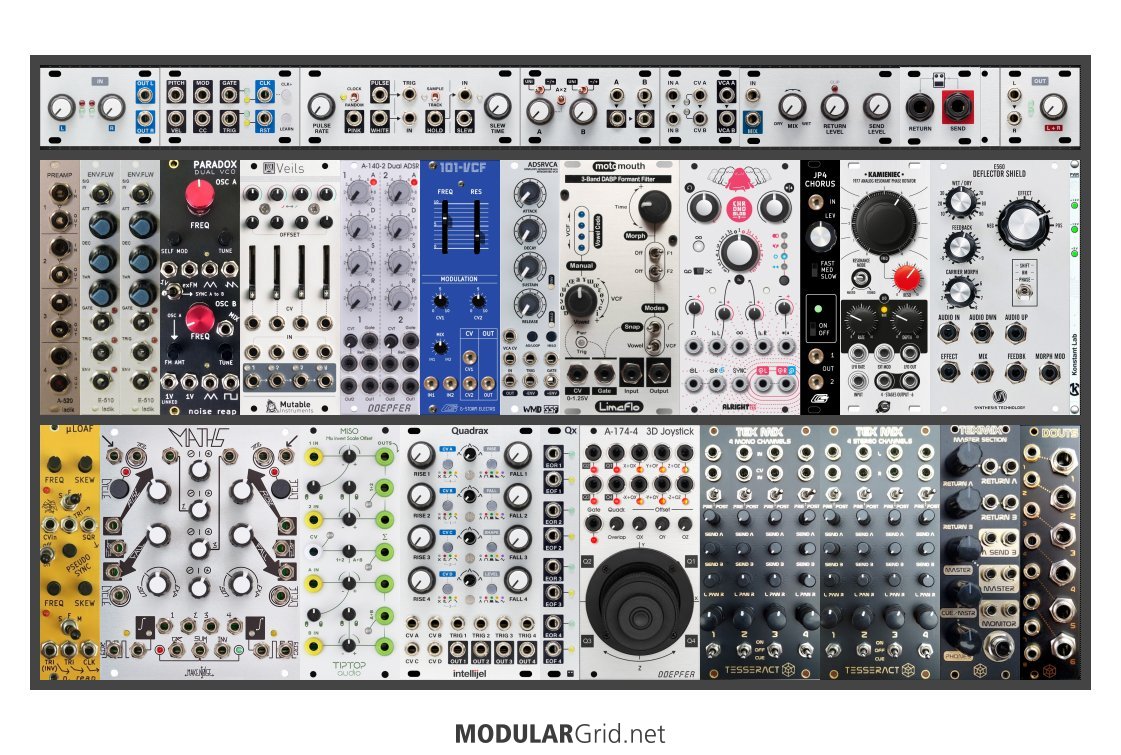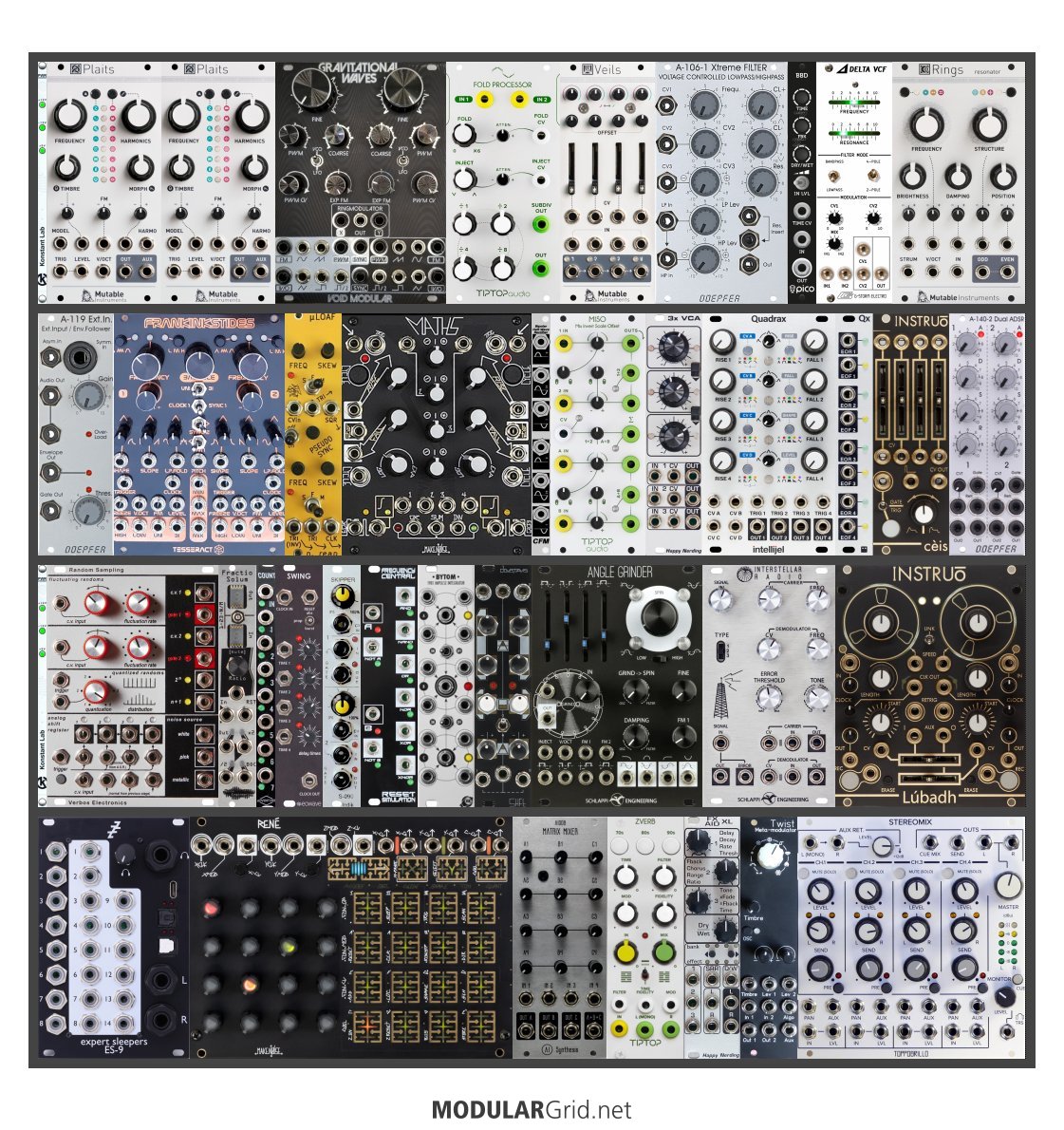OK...well, here's a possible idea for the 6U Rackbrute:

Since this build is more intended as a "sidecar" as far as its own voicing goes, I opted to add more in the way of modulation sources so that these can go out to the Hydrasynth and/or Minibrute as needed.
Top row: The P/S, then a gated slew limiter - this lets you gate the slew response in a similar fashion to the TB-303 "glide", which can be selected between specific steps. In this case, you'd simply select the points where you want that "glide" and then sequence a pattern of gates for that. Oscillator (dual oscillator, in fact) is a Void Gravitational Waves, which gives you lots of complex VCO-style patchpoints as well as an onboard ring modulator. Then this is followed by Nonlinearcircuits' dual Buchla waveshaper clone, and then you've got a Veils for controlling oscillator (or other) signals that get fed to the VCF. This is also from Void, and it's their stereo state-variable VCF. Then after that...more VCAs. Since I opted for a stereo mixer that has no VCAs for level, I put in a Zlob Vnicvrsal VCA which gives you VCAs for six of the Cosmix's inputs, allowing level control for each mono strip as well as one stereo pair. The Cosmotronics Cosmix has four mono inputs and two stereo input pairs, plus an AUX send and pan per mono strip. The AUX allows you to tailor your effects send from the mono strips, and then you have two stereo inputs that function as stereo returns OR stereo inputs. Then the audio out is after this, which offers yet another stereo AUX return, plus your headphone preamp as well as isolation.
Bottom row: Your noise and sample and hold is on the left. Then there's a dual VCable LFO, Noise Reap's uLoaf, which has a very odd "psuedo-sync" control that can send one of the LFOs into less of a regular waveform and something more like a "wobble". Following this, Maths...then Frap's 321, which is a module for altering/mixing/inverting CV and modulation signals from other modules to create more complex "composite" modulation curves. Then Happy Nerding's 3XVCA gives you three mixable linear VCAs for mixing and control over modulation levels. Following this section, you've got envelope generators, although the Intellijel Quadrax is actually rather more complicated than a typical set of two-stage envelope generators, especially when tandemmed with the Qx expander. After that, you've got a pair of ADSR envelopes...then effects, with a Mutable Warps for your "frequency" effects and a Happy Nerding FX Aid XL for the "time" ones. And the very last bit there is actually a quad level shifter for line-to-synth voltage conversions. This bit allows you to input the outputs of other devices back into the modular, so that if a certain situation requires you to mix the Minibrute and Hydrasynth through a VERY minimal external mixer, you can rely on the Cosmix + these level shifters to let you feed THOSE sources through them, potentially making for an easier setup.
Like I said, this is sort of an "example"...but it's actually not a bad example as it is. But it does hit all the bases...you've got a very capable voice section, modulation is nicely overspecced for the modular and other synths to use, and you get onboard FX and stereo mixing that can also take external signals. This is pretty much the sort of thing that would be ideal as a Rackbrute complement for both the Hydrasynth and the Minibrute, though.


